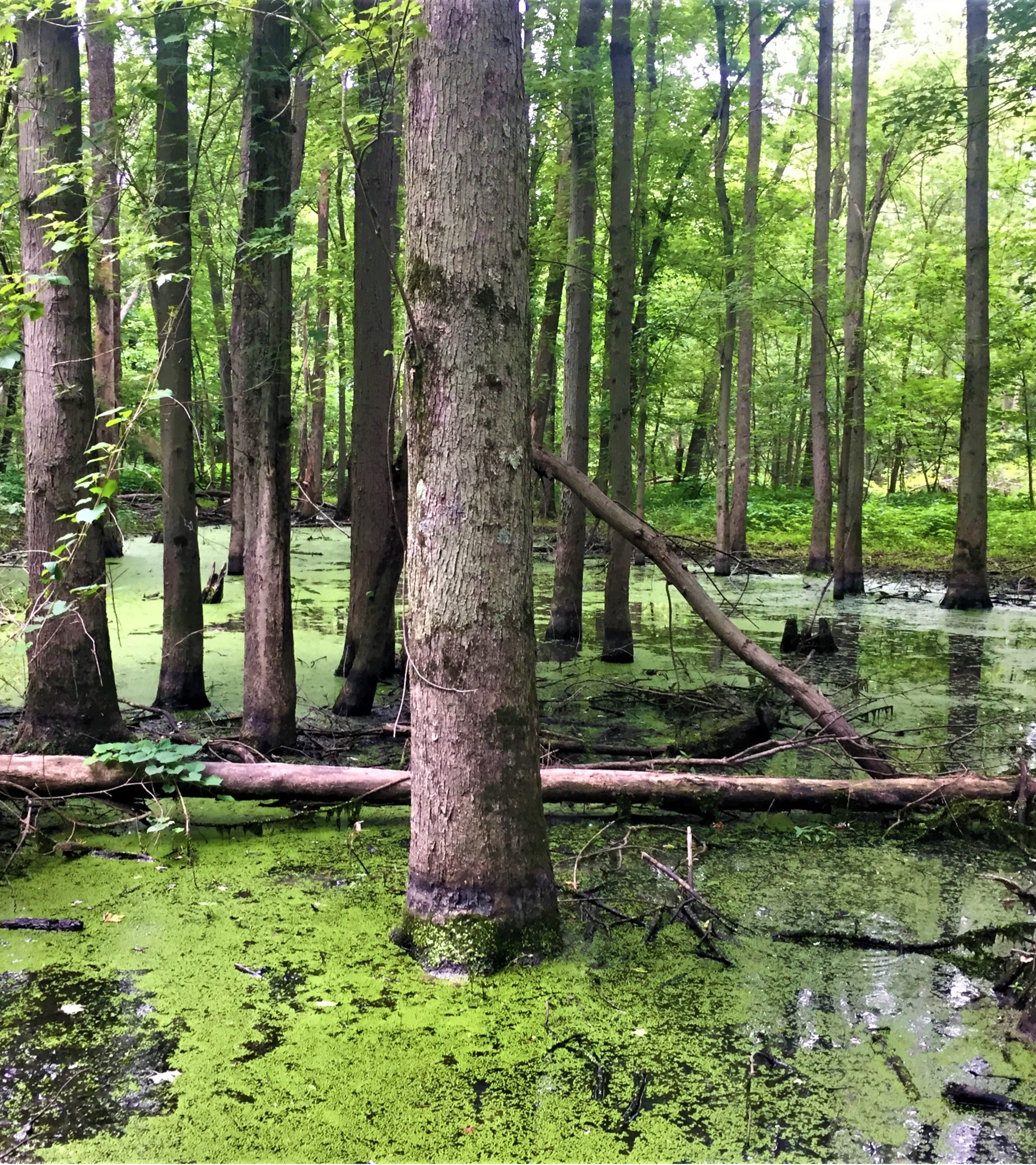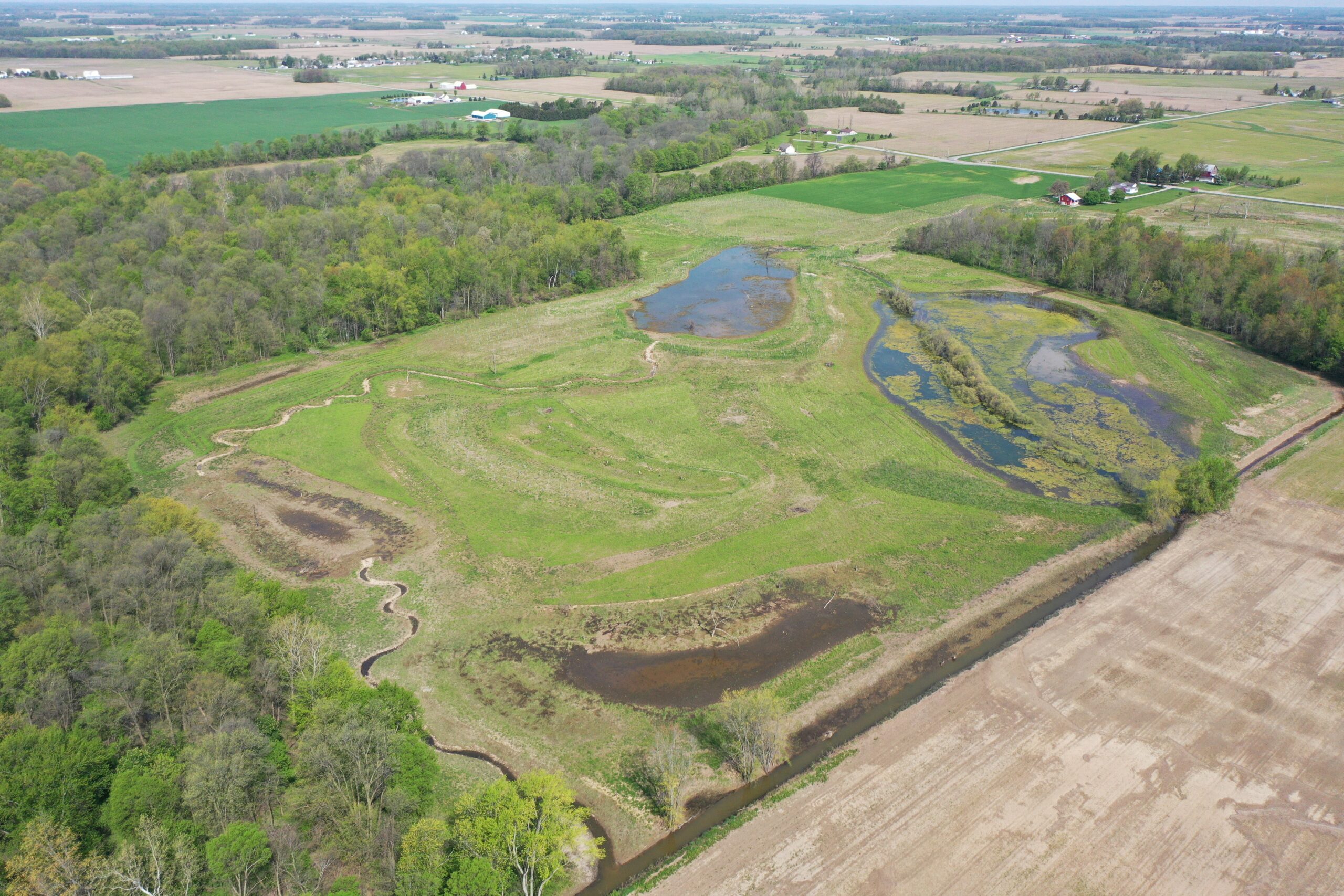Restoring land back to the way it was before it was a crop field, before it was a golf course or the footings for structure, can feel as though it is a work of fiction or a work of art. You can almost imagine the guiding hand of the author as the ground begins to rumble, dirt churning under large mechanical hands as the land begins to undergo change as far as the eye can see. As water begins to seep back into dips and crevices of the landscape, the artist then comes in with their paintbrush, dotting the land with budding wildflowers and sprouting trees as the conductor readies the chorus frogs.
But this work isn’t a work of fiction. It’s detailed engineering plans, maps, and timelines poured over by many people from different backgrounds and expertise. It is real, land moving work that the Conservancy has been focused on for over the past decade. Since 2014, the Conservancy has restored or is currently working restoring more than 900 acres of land and three miles of naturalized waterways.
One such project is our largest project to date; the 100 acre restoration of the 160 acre Clary-Boulee-McDonald Nature Preserve in Seneca County.

Standing on the ground before restoration took place, it was easy for us to imagine the wetland it once was. Though covered in soybeans, the field that stretched out before us had lower, wetter areas even with the drainage tiles below the field. With gentle landscapes defined by naturally shaped boundaries, our team could easily imagine vernal pools and croaking frogs. We knew that with just a little restoration and the removal of drainage tiles, this would be a thriving wetland once again.
Restoring 100 acres of land is a herculean feat. Despite the tens of thousands of acres we protect, we are still a small non-profit made up of a lean and mighty team. Good conservation work rarely occurs in a vacuum. Often, there are a number of dedicated partners involved in a project and this site was no different. This restoration effort was funded by grants from H2Ohio and One Tree Planted, and was completed in partnership with EnviroScience Engineering, RiverReach
Construction and Seneca County Parks.

Even with the help of an environmental contractor, this was still no easy job. Moving a land changing 49,500 cubic yards of soil (about 74,000 tons), RiverReach Construction, who has done hundreds of these types of projects over the past 30 years, admitted, “This is the most dirt we’ve ever moved in one job.” Restoration work on this scale is special, but this project itself was even more special in the fact that it is adjacent to a large swath of existing forested habitat in the floodplain along Wolf Creek. By completing restoration work on both sides of the creek, we created a huge expansion of existing forest along the creek. These creek and riverside habitats are crucial corridors for wildlife movement. The larger patches of habitat we can create and protect, the more robust native wildlife populations will be.
Wildlife habitat is an important consideration when it comes to deciding how to approach a restoration project. Another critical wetland restoration project we recently tackled sits on the convergence of the east and west branch of the St. Joseph River. Now an extensive complex of high-quality wetlands, the St. Joseph River was once a frequently flooded farm field. Just as with Clary-Boulee-McDonald, the land spoke of a time where it was a rich natural wetland. A gentle valley weaved through the center of the property, once home to a stream that flowed unimpeded. As the site was cleared and drained to allow it to be farmed, the stream waters were carried away by drainage tiles, redirected under the stream bed which had long been filled and flattened by plowing. Simply restoring the streambed, however, was not all that was in the cards for this property.
Like Wolf Creek, this site was home to a large patch of high quality forested wetland. By taking in consideration of the entire site, we knew that if we expanded the habitat beyond just restoring the stream bed, we could boost wildlife populations, increase flood control, and increase nutrient pollution removal for the entire surrounding area, not just on the site. Restoration is not always simply returning land to just how it originally was. In light of the landscape changes that have occurred in our region, sometimes innovation is critical in our restoration work, considering how we can not only restore a specific property but also accept and treat water and nutrients from surrounding lands that remain in production.
The restored stream was designed with a central “hub” wetland that collects all water from the uphill part of the property. The water collects in the hub wetland, having nutrient pollution filtered out by capture of sediments and interaction with wetland plants. Once the hub wetland is full enough, the water spills out in three different directions, where it flows through small meandering streams and into other smaller wetlands. This gives all the water coming into our property multiple “treatments” for nutrient pollution—from winding, rocky streams that remove nitrogen and by settling and filtering through two or three different wetlands, which help remove phosphorus.
Our restorative work is always striving to find a balance between innovative, natural and continued use of the land. The St. Joseph River Confluence Preserve is a project that highlights all three. Not only did we expand upon the natural habitat that was previously there, this project is a part of the Conservancy’s Food & Farm Initiative. The Food & Farm Initiative is designed to provide land access to new and beginning farmers, while safeguarding our waterways by balancing cropland with natural habitats, requiring ecologically-responsible practices. Part of the property is an organic alfalfa field, leased by a young farmer and surrounded by the natural filtration we restored.
Having these natural habitats and wetlands along Wolf Creek and St. Joseph River helps naturally filter runoff from the neighboring farms and fields, making the water entering our waterways much cleaner than it was before. These projects in the upper watershed have a direct impact on the water quality of the streams and tributaries that eventually feed into the lake. Wetlands are a natural filtration system that help capture excess nutrients that get carried into our water systems as water travels across the land. Excess nutrients, like nitrogen and phosphorus, in the water are the leading factor to the increase in algae that cause the toxic algal blooms in Lake Erie.


